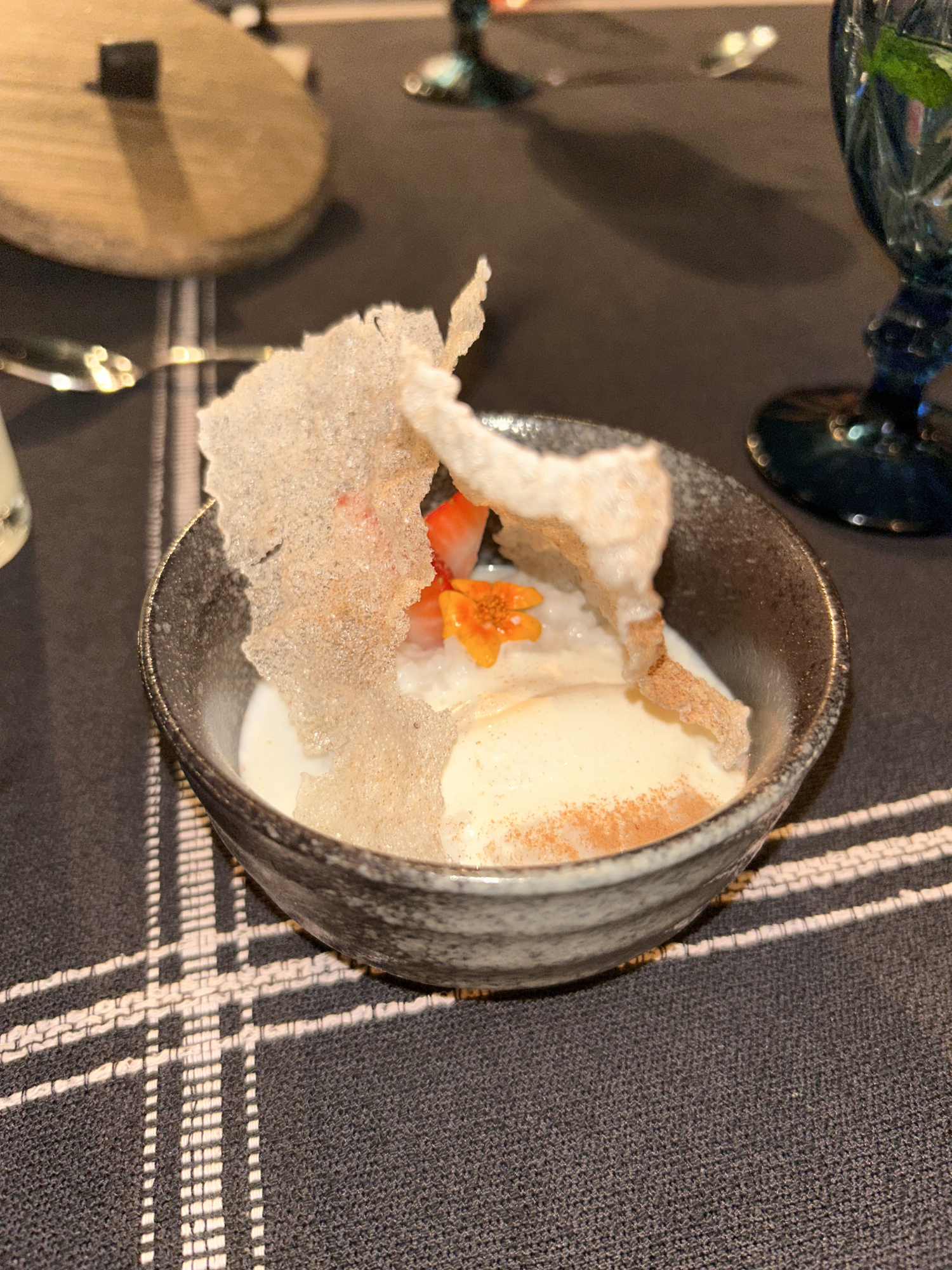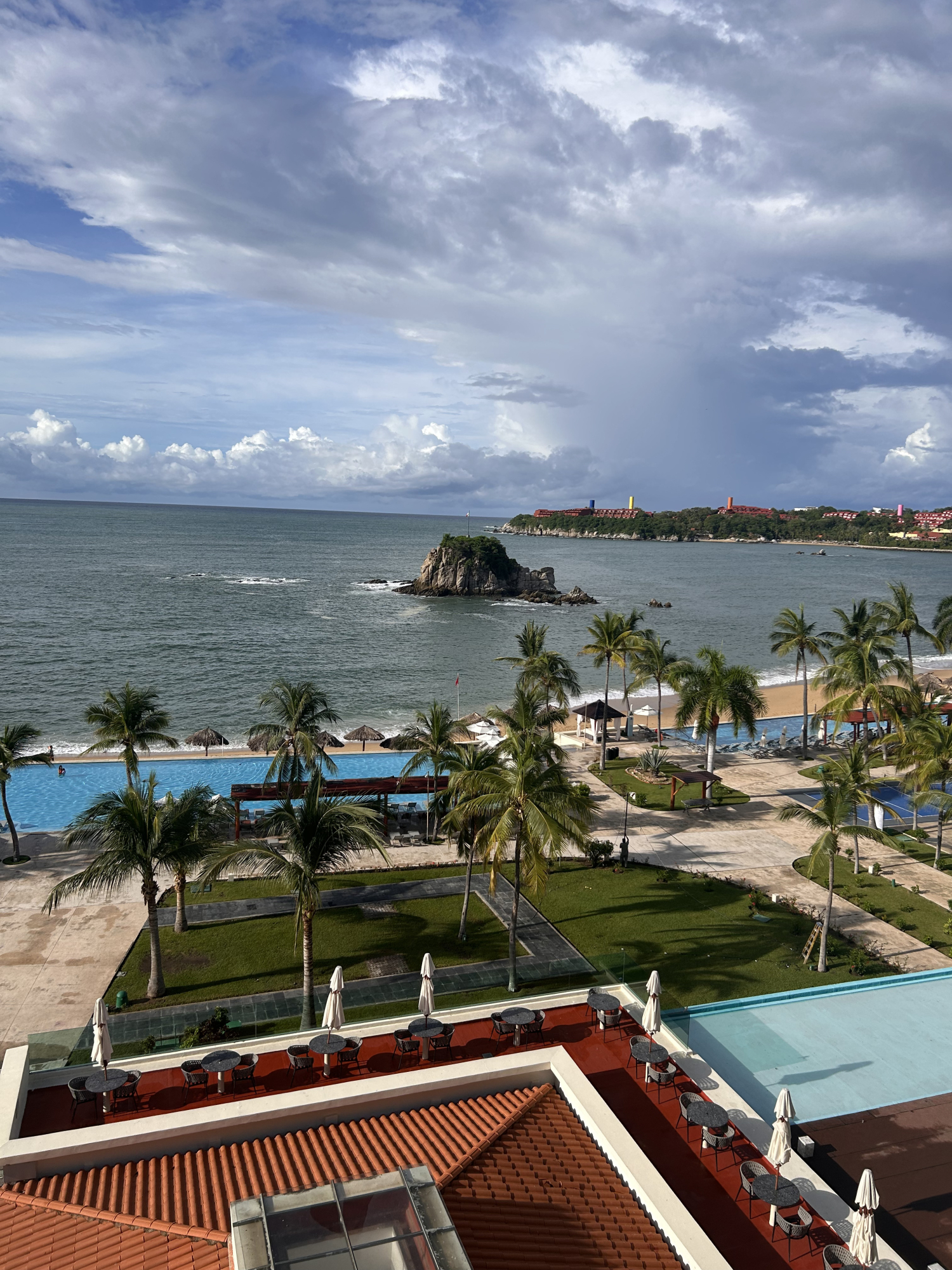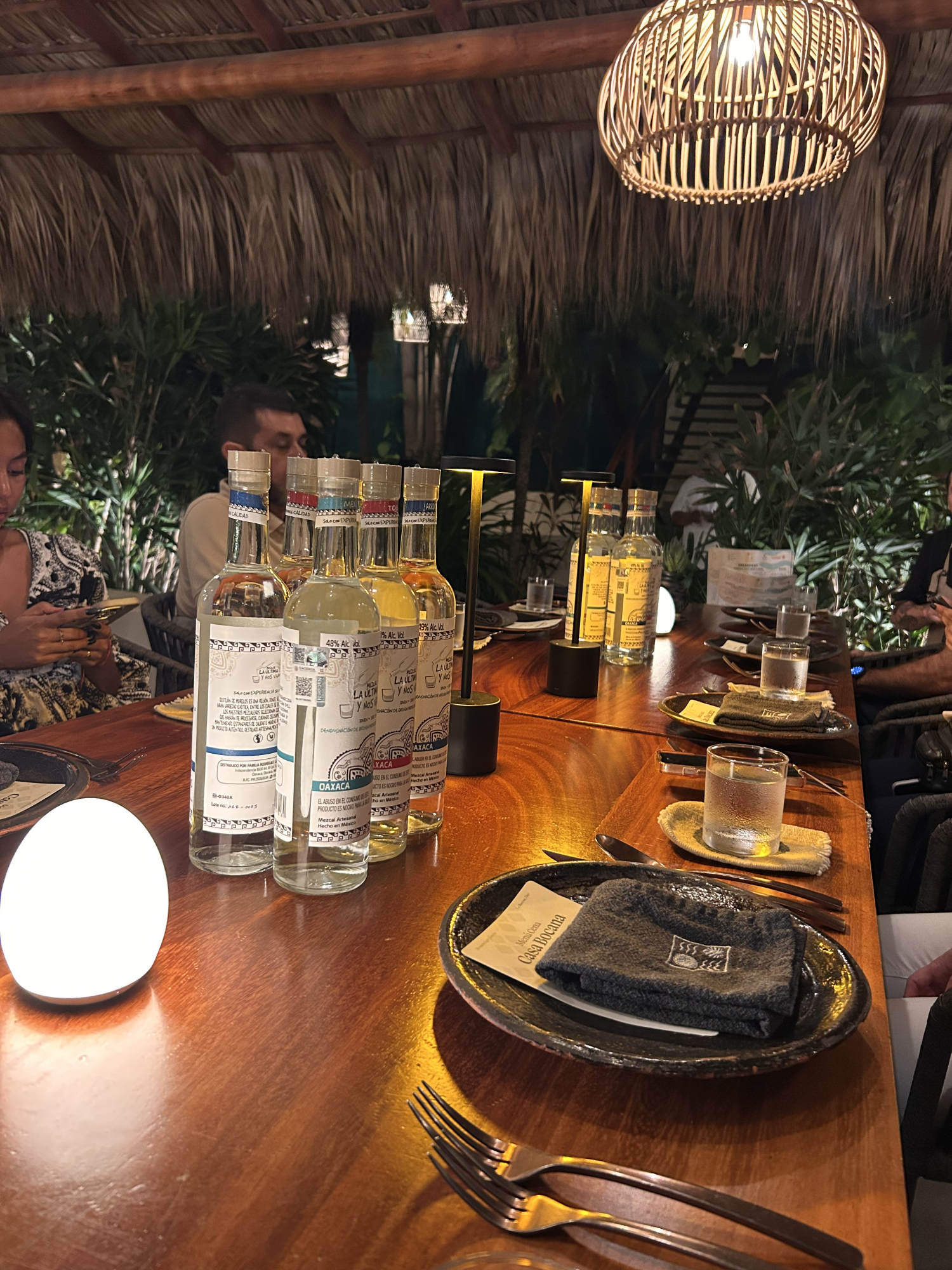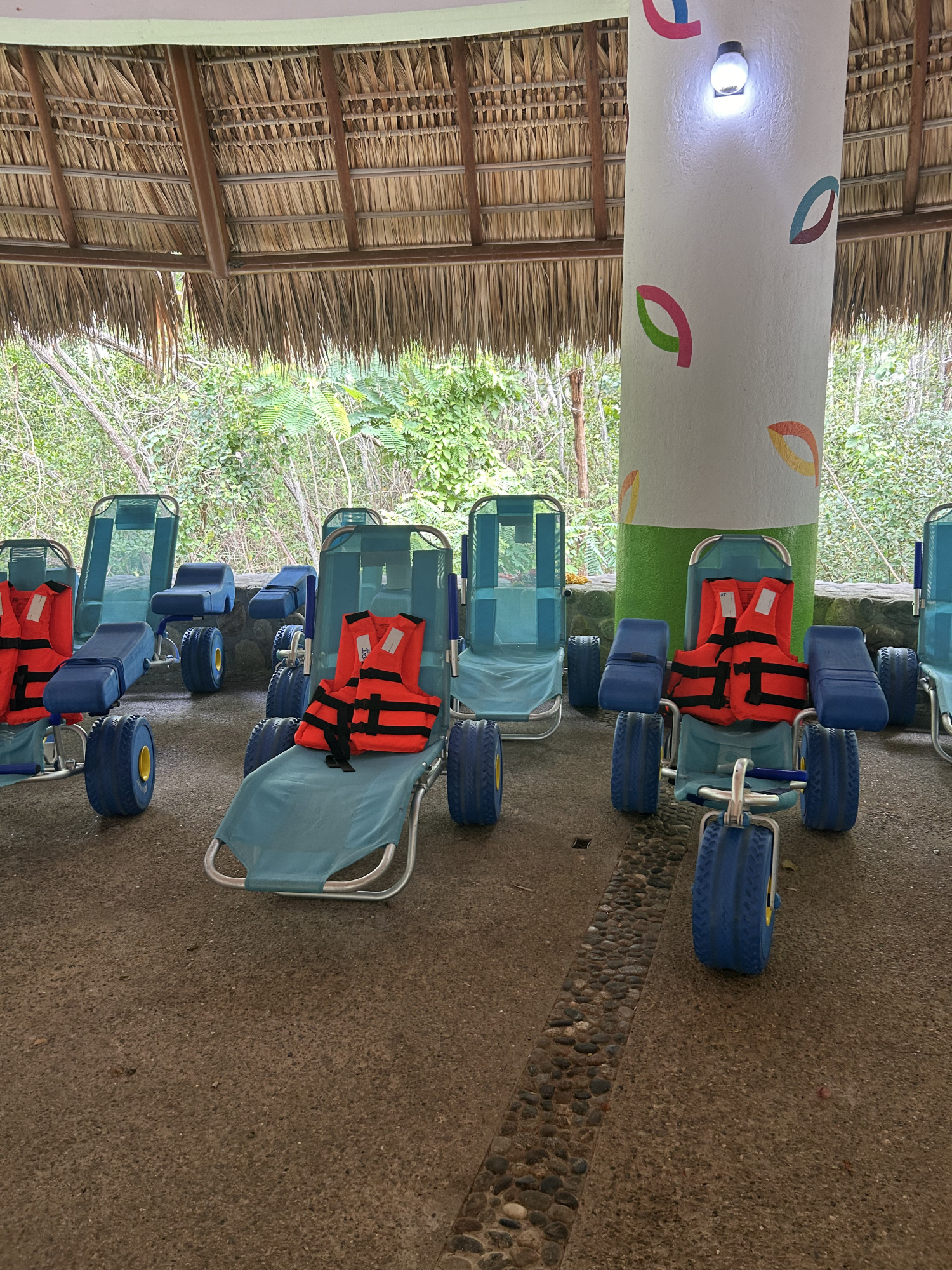Huatulco, the Mexican paradise where luxury is experienced with respect for one's roots and awareness.

In the "belly" of Mexico, where the Huatulqueños live, lies a hidden paradise that has begun to position itself as one of the most exclusive destinations in the Pacific, far from the international tourism spotlight of Cancun and the Riviera Maya.

Huatulco is a tourist destination on the Pacific coast of Oaxaca, Mexico. Photo: Sara Quevedo. El Tiempo.
Just over 30 years ago, the luxury hotel began to synergize with the natural wonders of nine bays and 36 beaches—mostly pristine—of white sand and azure sea. It also blends with the cultural richness of Oaxaca, pronounced "ojaca" (so you don't get the April Fool's joke), the state of Benito Juárez, Mama Coco (the protagonist of Disney's Day of the Dead movie), and mezcal.
All-inclusive chains such as the Hyatt have arrived on the coast of Santa María Huatulco, with hotels like the Secrets, for adults only, and the Dreams, with a family-friendly offering, both with private beaches , more than four pools and a varied gastronomic offering, from enchiladas and the powerful and spicy mole, to an international menu adapted to any palate.
But Mexican resorts have also been built, such as Binniguenda, which focuses on personalized service , or Quinta Bella, which has seven restaurants, each with its own chef, for 97 rooms.
Huatulco, a municipality with well-preserved Zapotec roots visible in its people, its slang, and its food, has an economy that revolves, at least 90 percent, around tourism. However, the all-inclusive offerings of the international chains that have run aground along more than 35 kilometers of coastline have fallen out of favor with mainstream resorts, focusing on all-inclusive restaurants, boutiques, and spas.
You breathe, taste, and experience Oaxaca in every detail. From the enormous alebrijes that guard Dreams and are sold in pocket-sized pieces at the local markets of Crucecita —the town closest to the bays—to the mezcal tasting and the menu at Casa Bocana, featuring grasshoppers, chicatanas, and the famous maguey worm.
At this luxury hotel, located on the banks of a river mouth, chef Ansony Hampshire and master mezcalero Abel Rodríguez offered a pairing dinner to accompany the three varieties of La Ultima y Nos Vamos mezcal, a sample of the finest spirits, accompanied by traditional snacks.
Don Abel, who is in his 70s and has spent most of his time harvesting and distilling wild agaves, taught a group of Colombians with sensitive throats the proper way to enjoy this signature drink of Mexico's indigenous peoples. "Mezcal, like women, with kisses and respect," the maestro summed up.

The region's gastronomy is one of its main attractions. Photo: Sara Quevedo. El Tiempo.
The tasting included drinks from the Tobalá, Mexicano, and Arroqueño denominations, and with each sip—or, as Don Abel said, with each kiss—the hosts told the story behind each bottle. “ We have eight regions, and each one contains ingredients native to those places. The last one, and we're leaving, has ingredients from each to achieve the quality of the raw materials. In this case, the brand is nine years old,” the author and owner stated.
A ton of agave, which is mostly wild plants, costs around 100,000 Mexican pesos. This amount produces about 80 liters of mezcal. The highest quality mezcal is distilled in clay or copper pots , and the liquid is then left to settle in glass jugs.
Those who contribute to its preparation are, for the most part, traditional families who have passed down this knowledge through generations. After all, Oaxaca is a land proud of its roots, and, as its inhabitants say, "our culture is tattooed on our skin."
While the Dreams Hotel offers the ultimate luxury, offering a spa day, a gym, ocean-view pools, beach activities, or spacious rooms with private balconies, Huatulco boasts unmissable natural wonders.
To this end, travel agencies offer bay tours: a boat ride along some of the most beautiful beaches in this Pacific region. There's the calm Santa Cruz beach—which looks like a swimming pool, as they say in Mexico—where the cruise ship dock is located and where the beach club of the Binniguenda Hotel and Nirú Ocean Suites are located. If you're not staying in one of the wonderful rooms with a terrace, you can also purchase a day pass to enjoy the area.

Travel agencies offer bay tours. Photo: Sara Quevedo. El Tiempo.
Also must-see are the Chahué and Tangolunda bays—which in Zapotec means beautiful woman—and the Conejos, Maguey, Órgano, Cacaluta, Chachacual, and San Agustín beaches.
An additional fact: on the tour, in the area where the lighthouse is located, there is a blowhole that the locals christened the bufadora. You can also see a pristine heart-shaped beach and another where the movie Y tu mamá también was filmed.
Zapotec mixology Huatulco also offers a wide range of cuisines, a sector that the state of Oaxaca has generally embraced, taking advantage of indigenous ingredients and preparations and combining them with haute cuisine. At Secrets at the Hyatt or the Quinta Bella hotel, with nine restaurants, you can enjoy an international menu alongside delicious enchiladas or enmoladas, which, if you're in Mexico, are a must-try.

The tequila and mezcal tastings are not to be missed. Photo: Sara Quevedo. El Tiempo.
This mix also applies to spirits. Chains offer signature cocktails that combine hibiscus flower, tamarind, and typical tropical fruits with traditional mezcal or tequila.
Roberto Torres taught us how to mix two of his favorite drinks, which won him awards and also immortalized his mother. One of them is called Rocío, in her honor.
Corporate social responsibility Since tourism in Huatulco was planned and the city was built with a hotel offering of more than 17,000 rooms, it was possible to establish sustainable infrastructure from scratch to protect the natural wonders around which 90 percent of its economy revolves.
According to local officials, including municipal social worker Jazmín Villar, this city of approximately 60,000 inhabitants has a robust sewage and water treatment system that prevents waste from being dumped into the sea, as is common in other coastal cities.
Furthermore, pristine beaches that can only be seen from a boat are preserved, and there is a clear commitment to the conservation of flora and fauna. Most importantly, there is constant educational outreach and tourist inclusion in this endeavor. Twenty minutes from the bays, there is a nature reserve with a swamp home to more than 300 alligators, and one of the ecotourism plans is the release of sea turtles.
“We have protected natural areas, which will not be disturbed, and that also gives us the certainty that, over the years, we will continue to find a similar—and even better—environment. So, how do we ensure that both locals and tourists respect that environment? We created a document called the Code of Uses and Customs for the Sustainable Development of Huatulco ,” said Angélica Angón, president of the Hotel Association.
He explained: “We developed this code about five years ago, and now we want to share it so that those of us who live here, those who provide services, and those who visit us can all follow the same guidelines. These aren't imposed rules: it's a way to agree on how to preserve this place as well as possible for future generations .”
The inclusive beach The icing on the cake of the trip was meeting and sharing the experiences of people with disabilities at the inclusive beach. This space, created by the community manager, offers amphibious equipment: wheelchairs, crutches, and a marked and adapted route so they can enjoy a completely calm sea.

The inclusive beach is one of the region's attractions. Photo: Sara Quevedo. El Tiempo.
Furthermore, at the initiative of the Office for Comprehensive Family Development, a social program was implemented for physiotherapists, doctors, and healthcare professionals to provide thalassotherapy to people with mobility difficulties.
“What does the inclusive beach consist of? Through seawater and all the elements it contains, we offer therapies with the support of trained personnel. This is what is known as thalassotherapy, which harnesses the properties of the sea—the water acts as a type of natural plasma—to provide physical and emotional benefits. Under this new administration, and thanks to a partnership with the State Government and the Ministry of Tourism, we have also managed to improve the equipment. We no longer use only old chairs and walkers: we now have adequate infrastructure to receive and care for people with disabilities,” said community manager Jazmín Villar.
In Zapotec, “Huatulco cabeza lii.” In Spanish, Huatulco awaits you.
*SPECIAL ENVOY TO TRAVEL
eltiempo




